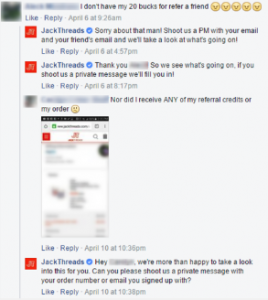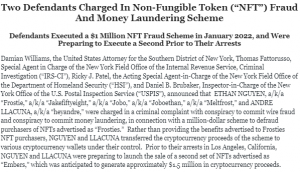
Writing for B2B audiences is a tricky gig. Getting people to like it? Even trickier.
The shift from brand to customer-centric content went largely unnoticed by many content creators who still rely on the same old tactics. Writing a catchy title, organizing the content in a way that makes it easy to read, being clear about the value proposition: those are all essential, but they’re not enough to make it appealing and build trust.
No bullet point or emphasis on a product benefit will make an impact unless you put yourself in the shoes of your audience. I’ll try to demystify the main characteristics of both bad and good B2B posts so hopefully, you can write a winning one each and every time.
Let’s start with the bad stuff.
What you are (likely) doing wrong
When dealing with new clients, I find there are usual suspects responsible for their previous content falling short of their expectations.
1. It’s more of the same.
The current climate in the world of B2B blogging can only be described as an echo chamber. There is a large number of regurgitated and repackaged blog posts floating around the web that bring little to no value to business-specific audiences. In fact, generic content can significantly hurt your brand as it implies you have nothing new to add to the conversation.
2. It’s boring.
Because B2B content is generally considered high-level and technical by default, the writing often tends to be dry, too formal, devoid of any personality, and in some cases even patronizing – all the ingredients for a bad first impression from which there is no recovery.
3. It’s not attuned to the audience’s needs.
There is a wide array of issues here but mostly it’s about content being too complex and/or overly promotional. Flexing your tech expertise and your solution’s brilliance is not appropriate each time. Readers expect to learn something new, solve a problem they’re facing, perhaps even brighten up their day – not read about things they already know or don’t pertain to their challenges.
Onto the good 🙂
How to spice up your content and make it engaging
Creating original content is essential.
This should be common sense but for some reason, it isn’t. What characterizes B2B readers is their ongoing search for solutions to their problems. The first step in creating unique and engaging content is ensuring there is a foundation on which you can build up. Meaning, every piece of your content needs to have sufficient quality insights and be focused on fresh new perspectives, and that means validating your ideas (aka covering the topics your customers are interested in).
Not all topics hold equal value. You could write a perfect article but still fail to make an impact if you don’t supply your audience with information they care about.
- Use tools such as Google Trends, AnswerThePublic, MarketMuse, and BuzzSumo to search for popular topics and searches across all categories.
- Ask your target audience – reach out directly to your current customers, be upfront on social media or make polls and surveys to find out what topics and content types your readers are interested in. What challenges they’d like you to write about and help them solve? This can not only help you brainstorm ideas based on the feedback but also improve the relationship with your audience as it shows you care about their opinion and needs.
- In the same manner, be diligent and delve into social listening so you can be privy to conversations and trends happening both around your brand and your industry as a whole.
Next – keep your audience’s emotions in mind. This is arguably the biggest change for 2021 and beyond. We’ve all endured a lot staying indoors for the better part of the past 12 months and certain businesses didn’t fare well amid the global crisis. All of this can have a strange effect on your buyer persona, which is why having their emotional mindset on top of your fingertips is very important. Be sympathetic so your readers can identify with you and eliminate phrases or descriptions that feel overused. Seriously – how many times have you read and heard some form of ‘uncertainty’ lately?
On that note, be deliberate with your word choice. The more descriptive and powerful your word choice is, the stronger the emotional pull is to stick around and read through to the end. It’s easy to fall into clichés so be as specific as possible with your words, tone, and style. Feel free to borrow from the vocabulary your audience uses as it shows you’re part of the gang and can help establish a stronger connection.
Also, incorporate storytelling into your blog posts. B2B narrative can often feel cold and dry so use storytelling to make your content deep and get an authentic human touch. We instinctively visualize a story inside our mind when we read and if you make it entertaining, educational yet easily relatable, it’s going to stand out (plus it’s a great practice for your social effort too). A bit of humor always helps to make your content more enjoyable and convey your message in a more approachable way – especially in these uncertain times.
Bonus tip: Use our Bold checklist
To make sure we cover all the bases, we use a unique checklist. For every specific piece, we go through it to make sure we didn’t forget anything. It’s the most straightforward way to create a routine of best practices and make sure each piece of content is held to the same high standard.
Conclusion
The ever-shifting trends in content writing have left many companies struggling to achieve positive results in the heavily saturated marketplace filled with cookie-cutter content. Fortunately, the solutions to this problem are simple if you only readjust your mindset.
By paying close attention to your audience’s needs and utilizing all of the available techniques during topic selection, you will effectively solve all of the problems hindering your blog’s full potential. Remember: good content both engages and moves the audience closer to your marketing objective.
Digital & Social Articles on Business 2 Community
(24)







